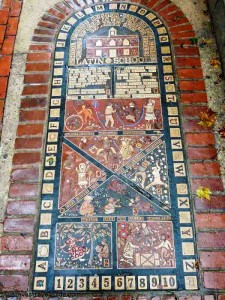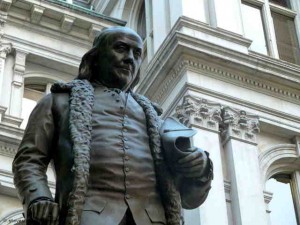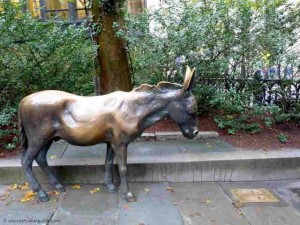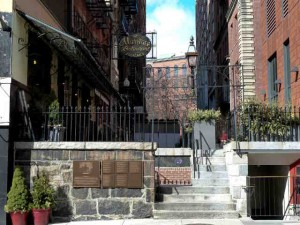Select your language to auto-translate:
First Public School in America
King’s Chapel Burying Ground is the final resting place for Boston’s earliest settlers including the family of William Dawes (the other rider on Paul Revere’s Midnight Ride) and John Winthrop (the Puritan leader at the founding of Boston in 1630 and the first governor).
Free
Open daily 9 – 5
Plan about 10-15 minutes to walk through
Background Information
Just down the street from King’s Chapel (behind the Chapel), there is a mosaic embedded in the pavement. The mosaic, by Lilli Anne Killen Rosenberg, represents the original Boston Latin School, founded in April of 1635. The actual school was located at the site of the Benjamin Franklin statue.
For the school’s first 10 years, classes were held in the headmaster’s house. The first school-specific building was completed in 1645. It was razed in 1745 to make way for the expanded King’s Chapel.
Boston Latin was the first public school in America. It was modeled after the Free Grammar School of the Puritans’ ancestral home of Boston, Lincolnshire, England. Boston Latin was to provide a foundation for a who’s who of American revolutionary thought, including Samuel Adams, Benjamin Franklin (a non-graduate), John Hancock, and Robert Treat Paine.
The Puritans were highly committed to education, not the least so that their children would be able to read the Bible. The commitment to education was so strong that a law was passed in 1647 that required the establishment of elementary schools in all surrounding towns of 50 or more families. Rich or poor could attend, but typically students needed to pay for firewood with cash or by trade. African Americans and girls were not welcome in colonial times. The girls were tutored at home.
The following year, in 1636, Harvard College was founded in nearby Cambridge. Harvard’s goal was not only to train students for the ministry, but also for other higher pursuits including law and medicine. Harvard’s Revolutionary-era alumni not only included most of the Boston Latin graduates, but also James Otis, Jr., John Adams, and even some prominent Loyalists, such as the English Governor at the time of the Boston Tea Party, Thomas Hutchinson.
Just behind the mosaic on the other side of the cast iron fence is the beautiful Old City Hall. It is in the Second Empire style and was started in 1862, completed in 1865. It was home of the city of Boston’s city council from 1865 until 1969, when the new city hall on City Hall Plaza was completed. It now houses private offices.
To the left as you face Old City Hall is a statue of Benjamin Franklin. Franklin is usually associated with Philadelphia, but he was born in Boston and lived here until he was 17. This sculpture, by Richard S. Greenough, was erected in 1856. It is the oldest portrait statue in the United States. There are four bas-reliefs at the base of the statue that highlight accomplishments from Franklin’s life.
To the right of Old City Hall, is a statue of Josiah Quincy. Quincy was the second mayor of the City of Boston, initiator of the Quincy Market development next to Faneuil Hall, and a president of Harvard College.
The brass donkey in front of City Hall represents the Democratic Party. The two brass footprints in the pavement in front of the donkey invite you to “Stand Here In Opposition.” The footprints have an image of an elephant – representing the Republican Party. You can stand or sit where you feel most comfortable.
The Province Steps (Province House)
For a brief detour, cross the street from Old City Hall and walk up Province Street. About 3/4 the way up the block on the right there are a few granite steps. The steps are all that remain of the Province House, and originally led from the back of the mansion into its formal gardens. The Province House (1679–1864) was the official residence of the Royal Governors until the American Revolution.


























